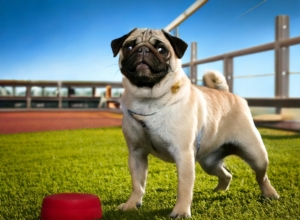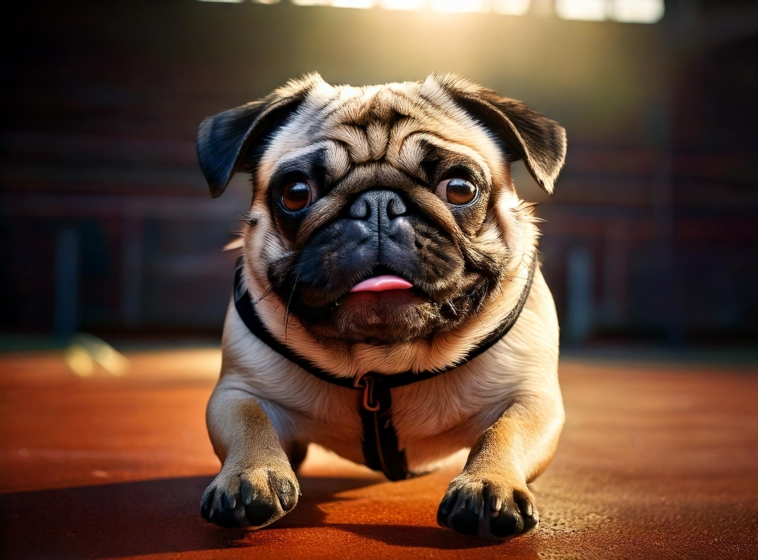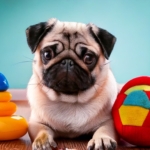Pug Training 101: Wrangling the Wrinkled Wonder
Pug training is attempting to teach a jellybean how to behave—squishy, sweet, and stubbornly slightly. To be successful, you must accept their oddities and negotiate with their endearingly goofy nature. Spoiler alert: bribery and over-the-top pep talks will feature prominently.
Understanding Your Squishy Sidekick
Pugs are essentially furry clowns with an affinity for snacks and snoozes. Here’s the inside scoop:
- They’re affectionate and clingy at the hip—get used to never peeing alone again.
- They’re possessive little drama queens, particularly when it comes to toys and attention.
- Short training sessions are a necessity unless you want to be ignored half-way through.
- Treats and praise are like magic—praise them like they won an Oscar.
- Early socializing helps prevent them from turning into suspicious gremlins later.
Keep it fun, light, and loaded with rewards. You’re not raising a soldier; you’re coaching a royal court jester.
Temperament Check: Know Thy Pug
Picture a loaf of bread with legs and a theatrical streak. That’s your pug.
- Very social—they’ll attempt to be friends with a rock if you allow it.
- A combination of hyperactive squirrel and paid napper.
- Loyal but needy—don’t expect them to be too happy when you step out of the room for 0.2 seconds.
You train more effectively if you work with their personality, not against it. Embrace their theatricality and use it to your benefit.
Setting Pug-Sized Goals
You won’t make your pug into a police officer, but you can shoot for “reasonably well-behaved couch potato.”
- Don’t anticipate puggy learning agility courses—she’s more designed for snacks than dashes.
- Divide up training into little easy victories—such as learning to “sit” without rolling over thespastically.
- Make it consistent—five-minute daily sitcom episodes, not training marathons.
- Use food. Always food. Food is the answer. Food is life.
Consistency, patience, and the rare meat-flavored bribe will take you far.
The Essential Pug Training Kit
You won’t require military equipment, but a few essentials will drive you sane:
- A decent collar and leash combination for those frenetic squirrel-chasing episodes.
- High-value treats—meaty morsels, not tragic dry biscuits.
- A crate for housebreaking and intermittent “time to relax” situations.
- A clicker if you wish to sound like a game show host during training.
- Training pads because mistakes will occur (particularly post-victory zoomies).
- Chew toys to preserve your furniture, shoes, and sanity.
Must-Know Commands for Pug Sanity
These are your pug’s personal guidebook:
- Sit – Perfect for photo shoots and light crowd control.
- Stay – When you must have a moment to tie your shoe without a face full of pug.
- Come – Most useful when your pug suddenly becomes convinced they are in a spy film.
- Down – When it is time to relax. or at least pretend to.
- Leave it – So mystery snacks off the sidewalk aren’t a trip to the vet.
- Heel – So walks don’t resemble being dragged behind a fuzzy bowling ball.
Housebreaking Without Losing Your Mind
Let’s get real here: potty training a pug requires patience, cleaner, and maybe a sense of humor.
- Select one bathroom location and keep it sacred like the Holy Grail of potty places.
- Praise your pug lavishly as if they just got a moon mission contract.
- Watch over them like you’re protecting state secrets, and crate when you must.
- Clean up accidents promptly or they’ll think “Hey, this is my new bathroom.”
The real MVPs are routine and reinforcement.
Socializing Your Socialite
Even. the sweetest potato must get on with the world.
- Enroll them in puppy school to prevent a socially clumsy gremlin.
- Walk them in new places to broaden their little horizons.
- Arrange playdates with other polite dogs, ideally not those that bark in five languages.
- Keep new meetings relaxed and positive—slow them in, don’t blast off.
- Reward every relaxed, polite interaction as if it’s their finest performance yet.
Mastering Positive Reinforcement (aka The Bribery System)
If you desire good behavior, you must pay. Fortunately, pugs are low-cost—food, praise, and play toys are all that’s needed.
- Employ small, delicious treats for small triumphs.
- Provide verbal reinforcement like you’re presenting a TED talk.
- Chase around a variety of toys to make training not naptime.
- Reward at the right time—catch the good behavior in the act.
Pugs love applause, even if it’s just for sitting on command. Be consistent and you’ll both feel like stars.

Solving Common Pug Problems
Your pug may not be perfect, but at least they’re entertaining. Here’s how to handle the hiccups:
- Stubbornness – Keep sessions short and sweet, and pretend you’re winning an Oscar for patience.
- Housebreaking disasters – Stick to the schedule and embrace the magic of enzyme cleaner.
- Separation anxiety – Start small, add distractions, and maybe leave them a shirt that smells like you.
- Over-barking – Identify the stimulus and dial down the soap opera slowly.
- Pet disputes – Socialize from the beginning and frequently, and manage as if staging a soap opera.
Why Consistency is Your Best Friend
Pugs love routine. Without routine, they’re just bewildered loafs with large eyes.
- Maintain feeding, walking, and bedtime routines normal.
- Same commands each time—no freelance terminology.
- Have the whole family on the same page, or your pug will discover the weak link (and take advantage of them).
- Adhere to the praise and reward system—it establishes trust and improves behavior.
Consistency instills pugs with a sense of security, which makes training actually work.
Tapering Off the Training (Without Backsliding)
Eventually, you do want your pug to answer without waving a treat under their nose. It’s possible. Sort of.
- Maintain routines even when they “get it.”
- Regular, short practice keeps their talents up to speed.
- Continue rewarding occasionally—surprise praise keeps them honest.
- Keep taking them on adventures so that they remain adaptable.
- Monitor backsliding and gently nudge it before they become full gremlin again.
Health Considerations for Training
You can’t train a pug with a steam engine’s huff. Health comes first.
- Monitor breathing problems, particularly in warm weather—no high noon boot camp sessions.
- Don’t let them get chubby—use tiny treats and active training.
- Use low-impact exercise such as walking or swimming for those sensitive little joints.
- Have water readily available. Heatstroke is a real thing, and they can’t exactly use a fan.
Healthy pug = happy, trainable pug.
The Pug Training Routine That Actually Works
You don’t require a military schedule, however, you do require a plan.
- Repeats lessons regularly—they’re not ignoring you, they just forgot.
- Keep the sessions short—anything over 10 minutes and you’ve lost them to the void.
- Use rewards like a highly paid motivational speaker.
- Shake things up to combat boredom. No one likes the same episode daily.
- Be patient—remember, they’re little loafs doing their best.
Fun and Games: Training in Disguise
If learning is like play, then everyone is a winner.
- Hide and Seek – You hide, pug sniffs. Everyone thinks they are a genius.
- Puzzle toys – Brain gymnastics for your snorty friend.
- Fetch – Even if they only chase the ball and sleep on it.
- Obstacle course – Set it low to the ground and high on humor.
- Name Game – Teach them the names of their toys and be amazed at their selective memory.
Final Tips: Raising a Well-Behaved Pug Without Losing It
Pug training is a mix of equal parts patience, repetition, and high-pitched baby talk. In a nutshell:
- Utilize positive reinforcement—bribes instead of scolding, always.
- Be consistent with commands and routines.
- Socialize as though they’re trying out for a dog-friendly rom-com.
- Keep your cool—even when they pretend training is below them.
Consider their health—these are not rugged wilderness dogs, they’re indoor royalty.
Take the good times, keep your chin up, and don’t forget: even when your pug’s acting like a little goblin, they’re your goblin. And they’re attempting. Kind of.




